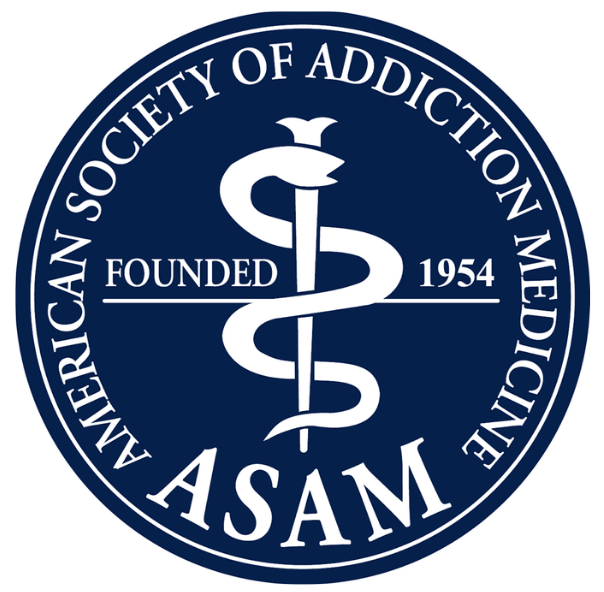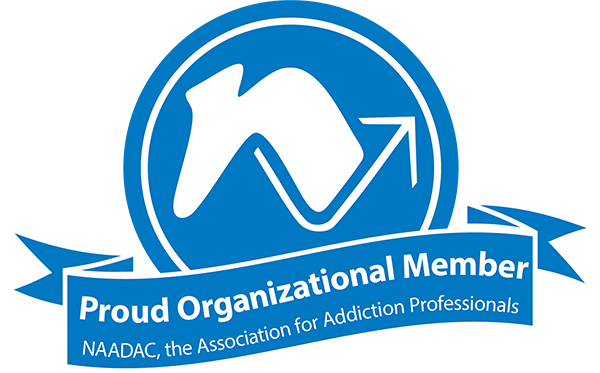Generalized Anxiety Disorder (GAD)—often called general anxiety disorder or simply general anxiety—is one of the most common anxiety disorders, characterized by ongoing, excessive worry about everyday situations. People with GAD may experience persistent feelings of apprehension or unease even when there’s no immediate reason for concern. This anxiety can affect nearly every aspect of life, from work and relationships to physical health and overall well-being. Fortunately, with the right treatment, people with this condition can take back control and live life without fear.
What Is Generalized Anxiety Disorder?
Generalized Anxiety Disorder (GAD), sometimes referred to as general anxiety disorder or simply general anxiety, is a chronic mental health condition characterized by persistent and excessive worry about everyday situations. Unlike typical anxiety, which may arise in response to a specific stressor, GAD involves ongoing feelings of tension or apprehension even when there is no clear reason for concern.
People with GAD often describe feeling “on edge” or unable to relax. This state of heightened alertness can affect concentration, sleep, and overall well-being. Over time, the constant strain of anxiety can take a toll on both mental and physical health, impacting relationships, work, and quality of life.
How Does GAD Affect Daily Life?
Living with generalized anxiety disorder can make everyday activities feel overwhelming. Simple tasks like making decisions, meeting deadlines, or managing responsibilities can trigger disproportionate worry or self-doubt. This constant mental load may lead to fatigue, irritability, or difficulty focusing.
Many individuals also experience physical symptoms like muscle tension or stomach discomfort, which can interfere with sleep and energy levels. These effects combined can reduce productivity, strain relationships, and diminish overall life satisfaction. The goal of treatment is to help individuals manage their anxiety effectively so they can feel more grounded, confident, and present in their daily lives.
What Causes Generalized Anxiety Disorder
The causes of generalized anxiety disorder (GAD) are complex and multifaceted. Researchers believe that a combination of genetic, environmental, and biological factors contributes to its development. Understanding these influences can help guide personalized treatment approaches and reduce the stigma surrounding anxiety disorders.
Genetic Factors
Genetics play a major role in the likelihood of developing GAD. According to a systematic review of the research, the estimated heritability of generalized anxiety disorder (GAD) is approximately 30%. Scientists point to several genes (e.g. 5-HT1A, 5-HTT / SERT, MAO-A, COMT, CCK-B) as being possibly linked to GAD.
Individuals with a family history of anxiety disorders are more likely to experience similar symptoms. However, this does not mean that anxiety is inevitable—rather, genetic predispositions may increase sensitivity to stressful environmental factors.
Environmental Factors
Individuals with a family history of anxiety disorders are more likely to experience similar symptoms. Negative childhood experiences like trauma, neglect, parental loss, or strife in the home are all linked to higher risk for anxiety disorders later on in life.
Biological Factors
Biological processes can play a key role in anxiety. Imbalances in neurotransmitters such as serotonin, dopamine, and gamma-aminobutyric acid (GABA) are associated with excessive worry and difficulty managing stress. Overactivity in brain regions that process fear, such as the amygdala, may also contribute to symptoms of GAD.
Generalized Anxiety Disorder Symptoms
The symptoms of generalized anxiety disorder can vary from person to person, ranging from persistent physical tension to emotional distress and behavioral changes. To receive a generalized anxiety disorder diagnosis, individuals typically experience excessive anxiety and worry for at least six months, along with several of the symptoms below.
Physical general anxiety symptoms may include the following:
- Muscle tension or aches
- Fatigue or low energy
- Headaches
- Sweating or trembling
- Nausea or gastrointestinal issues
- Rapid heartbeat or shortness of breath
- Difficulty sleeping or staying asleep
The bulk of general anxiety disorder symptoms are, of course, emotional; these include:
- Persistent worry or fear about everyday situations
- Difficulty controlling anxious thoughts
- Restlessness or feeling “on edge”
- Irritability or mood swings
- Feelings of dread or being overwhelmed
The following behaviors may point to generalized anxiety disorder:
- Avoiding situations that trigger worry
- Difficulty focusing or making decisions
- Overpreparing or seeking constant reassurance
- Decreased productivity at work or school
- Withdrawal from social interactions
How Is Generalized Anxiety Disorder Diagnosed?
A generalized anxiety disorder diagnosis involves a thorough evaluation by a qualified mental health professional, such as a psychiatrist, psychologist, or licensed therapist. Because anxiety can share symptoms with other conditions—such as depression, panic disorder, or medical issues like thyroid imbalance—an accurate diagnosis requires careful assessment.
Clinicians typically begin with a detailed discussion about the person’s emotional and physical symptoms, medical history, and how long the anxiety has persisted. Standardized screening tools or questionnaires may also be used to measure the severity of symptoms and how they affect daily life.
Diagnosing GAD involves objective and standardized criteria found in the Diagnostic Manual of Mental Disorders, published by the American Psychiatric Association.
Generalized Anxiety Disorder DSM-5 Criteria
According to the DSM-5 criteria for generalized anxiety disorder, a diagnosis is made when the following conditions are met:
- Excessive anxiety and worry occur more days than not for at least six months, about various events or activities (such as work, school performance, or personal responsibilities).
- The person finds it difficult to control the worry.
- The anxiety and worry are associated with at least three or more of the following physical or cognitive symptoms (with at least some symptoms present more days than not over the past six months):
- Restlessness or feeling keyed up or on edge
- Being easily fatigued
- Difficulty concentrating or mind going blank
- Irritability
- Muscle tension
- Sleep disturbance (difficulty falling or staying asleep, or restless, unsatisfying sleep)
- The anxiety, worry, or physical symptoms cause clinically significant distress or impairment in social, occupational, or other important areas of functioning.
- The disturbance is not due to the physiological effects of a substance (e.g., drug, medication) or another medical condition.
- The symptoms are not better explained by another mental disorder, such as panic disorder, social anxiety disorder, obsessive-compulsive disorder, or post-traumatic stress disorder.The anxiety, worry, or physical symptoms cause clinically significant distress or impairment in social, occupational, or other important areas of functioning.
Meeting these generalized anxiety disorder diagnostic criteria allows clinicians to distinguish GAD from situational or short-term stress and to develop an appropriate treatment plan.
Generalized Anxiety Disorder Treatment
The good news is that GAD is a highly treatable condition, and with the right combination of therapies and support, most people experience significant improvement in symptoms and quality of life. Effective treatments for generalized anxiety disorder focus on reducing excessive worry, managing physical symptoms, and improving coping strategies.
Treatment for generalized anxiety disorder may include therapy, medication, or a combination of both, depending on the individual’s needs, symptom severity, and response to care. Lifestyle changes (ex: exercise, meditation, etc.) can also enhance recovery.
Generalized Anxiety Therapy
Generalized anxiety therapy focuses on helping individuals identify and manage the thoughts and behaviors that contribute to persistent worry and tension. The most common therapy for generalized anxiety disorder is Cognitive Behavioral Therapy (CBT), which teaches people how to recognize distorted thinking patterns and replace them with more balanced, realistic perspectives.
Other evidence-based therapies for GAD include:
- Acceptance and Commitment Therapy (ACT): Encourages acceptance of anxious thoughts and feelings while promoting behavior aligned with personal values.
- Mindfulness-Based Stress Reduction (MBSR): Uses meditation and mindfulness exercises to reduce the intensity of anxious thoughts.
- Dialectical Behavior Therapy (DBT): Helps regulate intense emotions and develop distress-tolerance skills.
- Exposure Therapy: Gradually reduces fear and avoidance by safely confronting anxiety-provoking situations or thoughts.
Therapy provides tools for managing anxiety long-term, improving resilience, and preventing relapse.
Generalized Anxiety Disorder Medication
Medication can play an important role in managing generalized anxiety disorder, especially when symptoms are severe or interfere with daily life. The best medication for generalized anxiety disorder varies from person to person, depending on medical history, co-occurring conditions, and potential side effects.
Clinicians may prescribe one or more of the following medications for generalized anxiety disorder (GAD) to help regulate brain chemistry and reduce symptoms:
Antidepressants
Antidepressants are often considered the first-line medication for generalized anxiety disorder. They work by balancing neurotransmitters such as serotonin and norepinephrine, which influence mood and anxiety.
Common options include:
- SSRIs (Selective Serotonin Reuptake Inhibitors): Such as sertraline (Zoloft), escitalopram (Lexapro), and paroxetine (Paxil).
- SNRIs (Serotonin-Norepinephrine Reuptake Inhibitors): Such as venlafaxine (Effexor XR) and duloxetine (Cymbalta).
These medications may take several weeks to show full effects and are typically prescribed for long-term management under medical supervision.
Benzodiazepine
Benzodiazepines (such as lorazepam [Ativan] or alprazolam [Xanax]) provide short-term relief from acute anxiety symptoms by enhancing the calming effects of gamma-aminobutyric acid (GABA) in the brain.
Because they can cause tolerance or dependence, benzodiazepines are generally used for short-term or situational anxiety rather than as a long-term treatment. They are often combined with therapy or other medications for a balanced approach.
Buspirone
Buspirone (BuSpar) is an anti-anxiety medication specifically approved for treating generalized anxiety disorder. Unlike benzodiazepines, it does not cause sedation or dependency and may be better suited for long-term management.
Buspirone works by influencing serotonin and dopamine activity in the brain, helping to reduce excessive worry and promote calmness. It may take several weeks to reach full effectiveness and is often used alongside therapy or antidepressants.
FAQ About Generalized Anxiety
Here are some frequently asked questions about GAD:
Generalized anxiety is not typically classified as a severe mental illness in the same way as conditions like schizophrenia or bipolar disorder. However, it can still cause significant distress and interfere with daily functioning if left untreated.
The severity of GAD varies—some people experience mild, manageable worry, while others may struggle with constant tension that impacts work, relationships, or health. With proper treatment, symptoms can be effectively managed, and quality of life can greatly improve.
Generalized anxiety disorder can be considered a disability in certain cases, particularly when symptoms substantially limit a person’s ability to work, concentrate, or carry out daily activities.
In the United States, individuals with GAD may qualify for disability benefits under the Americans with Disabilities Act (ADA) or from the Social Security Administration (SSA) if their condition is well-documented and persistent. A medical or mental health professional can help determine eligibility and guide individuals through the process of seeking accommodations or support.
Generalized anxiety disorder (GAD) is one of the most common anxiety disorders. According to the National Institute of Mental Health, approximately 2.7% of Americans experience GAD each year, and nearly 6% will have it at some point in their lifetime. Women are diagnosed with GAD more often than men, and symptoms often begin gradually in adolescence or early adulthood.
Yes, it is possible to have both social anxiety disorder and generalized anxiety disorder at the same time. While both involve excessive worry, they differ in focus: social anxiety centers on fear of judgment or embarrassment in social situations, while GAD involves broad, persistent worry about many aspects of life. Co-occurring anxiety disorders are common, and treatment plans—such as therapy and medication—can be tailored to address overlapping symptoms.
Generalized anxiety disorder may not completely go away on its own, but symptoms can be managed effectively with consistent treatment and lifestyle changes. Many people experience significant, long-lasting relief through therapy, medication, or a combination of both. Building healthy coping strategies, practicing relaxation techniques, and maintaining a strong support system can all contribute to sustained improvement and symptom reduction over time.
Absolutely. With appropriate treatment, people with generalized anxiety disorder can lead full, productive, and satisfying lives. Managing GAD often involves learning how to identify triggers, use coping strategies, and maintain balance through self-care and professional support. Early intervention and consistent treatment make long-term recovery and wellness entirely achievable.
Panic disorder vs generalized anxiety
Panic disorder and generalized anxiety disorder are both anxiety conditions, but they differ in symptoms and triggers.
- Panic disorder involves sudden, intense episodes of fear known as panic attacks, which can include physical symptoms like a racing heart, shortness of breath, or dizziness. These attacks often occur unexpectedly.
- Generalized anxiety disorder, on the other hand, is marked by chronic, excessive worry about everyday situations rather than sudden episodes of panic.
While both disorders can occur together, treatment approaches—such as cognitive behavioral therapy (CBT) and medication—are effective for both conditions.
Treatment for Generalized Anxiety Disorder at Aliya Health Group
At Aliya Health Group, we provide compassionate, research-driven treatment for generalized anxiety disorder that addresses the mind, body, and spirit. Our programs are designed to help individuals break free from the cycle of worry and regain a sense of calm and control in their lives.
Our experienced clinicians use a combination of therapeutic approaches, including cognitive behavioral therapy (CBT), mindfulness-based practices, and, when appropriate, medication management. Each treatment plan is tailored to the individual, ensuring care that meets every person’s unique needs and goals.
Whether someone is seeking help for the first time or continuing their mental health journey, our integrated programs offer a safe and supportive environment for healing and growth.
Tips for Coping With Generalized Anxiety Disorder
While professional care is the most effective way to manage generalized anxiety disorder, there are many strategies individuals can use daily to reduce anxiety and promote balance.These mostly take the form of lifestyle adjustments like sleep, exercise, and healthy eating, such as:
- Regular exercise: Physical activity releases endorphins and helps regulate stress hormones.
- Balanced nutrition: Eating whole, nutrient-rich foods supports overall brain and body health.
- Consistent sleep: Establishing a sleep routine helps regulate mood and improve focus.
- Mindfulness and relaxation: Practices such as meditation, deep breathing, or yoga can calm the nervous system.
- Limiting caffeine and alcohol: Reducing stimulants can decrease restlessness and irritability.
- Connecting with others: Sharing thoughts and feelings with trusted friends, family, or a therapist can ease feelings of isolation.
At Aliya Health Group, we teach all of these things through our life skills training program.
Our Holistic Treatments for Generalized Anxiety Disorder
At Aliya Health Group, we believe in treating more than just symptoms—we treat the whole person. Our holistic treatments for generalized anxiety disorder combine traditional therapies with complementary healing practices to support mental, physical, and emotional well-being.
Holistic care options may include:
- Mindfulness and meditation training
- Yoga and movement therapy
- Art or music therapy
- Nutritional counseling
These approaches work alongside clinical therapies to help individuals restore balance, develop resilience, and feel empowered in their recovery journey.
Generalized Anxiety Treatment Near You
If you or someone you love is struggling with constant worry or anxiety that feels hard to control, help is available. Aliya Health Group offers generalized anxiety treatment near you, with programs designed to meet people where they are—emotionally and geographically.
Our facilities provide a peaceful and supportive setting where individuals can begin to heal, rediscover inner strength, and build tools for lasting wellness. Whether you’re seeking inpatient, outpatient, or specialized therapy services, our team is here to guide you every step of the way.
Reach out today to learn more about our anxiety treatment programs and start your journey toward calm, confidence, and renewed peace of mind.





